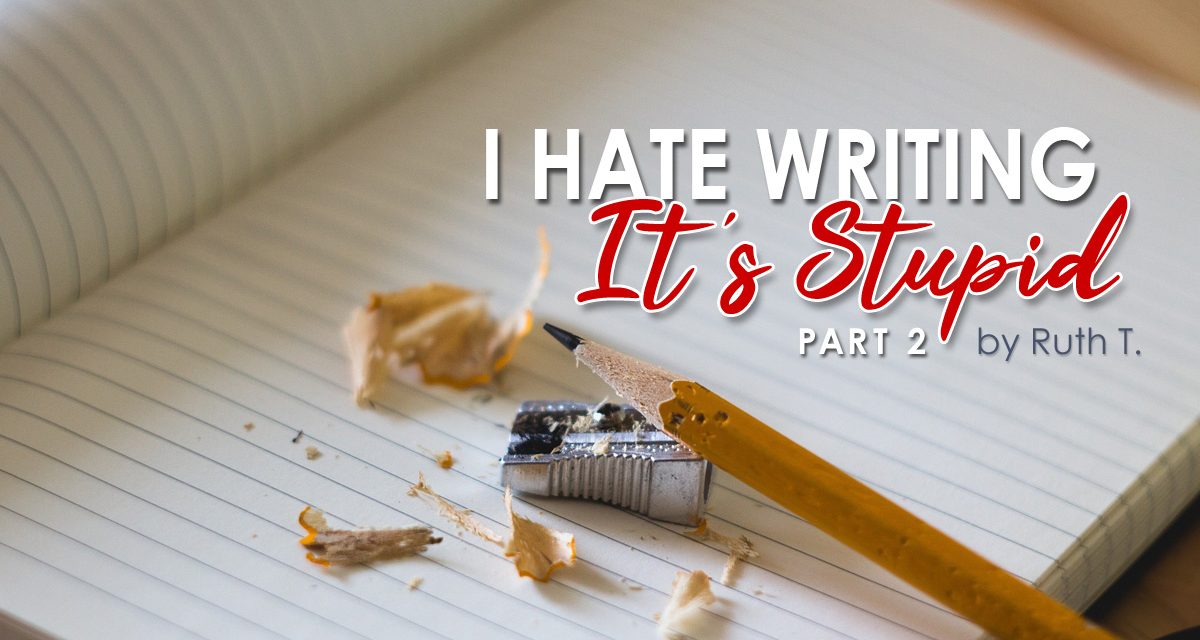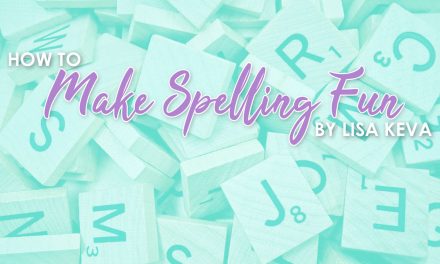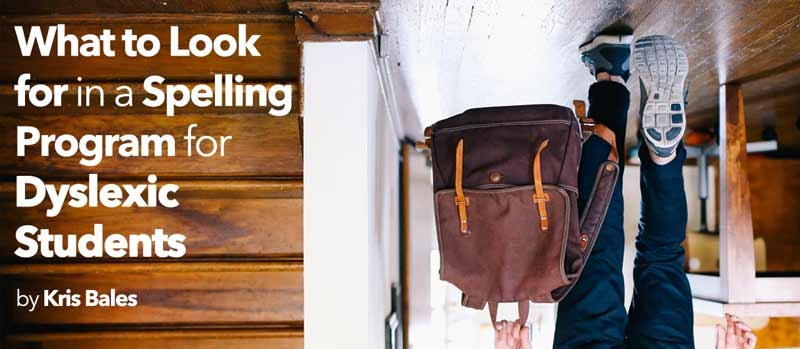Do writing assignments cause tears and groans? Is Exaggerated Composition Revulsion (ECR) running rampant at your home? One common cause of ECR is feeling we have nothing to say. We addressed healthy responses to this misconception in Part 1.
A second common cause is missing the significance of writing. If you regularly hear, “Why do I have to do this?” or “This is useless,” the dreaded ECR may be on the attack.
It’s normal to not understand or appreciate the worth in something challenging–especially if the benefits aren’t immediate. Students often fail to value writing—particularly academic writing–what’s the point in that?! And our teacher rationales of, “Because our curriculum says so,” and “You’ll need it when you grow up,” are not adequate convincers. Those aren’t valuable reasons to combat ECT in the here and now.
Composing does so much for us: improving long and short-term memory, building creative and critical thinking, just to name a few. While these are important motivations, the essence of writing is communicating: expressing ideas (the purpose) to someone else (the audience). Helping students understand this truth and teaching them to write with audience and purpose in mind will inoculate them from ECR.
Audience
Figuring out WHO you’re writing to is one of the most important steps before starting anything else. The WHO changes the WHAT (the content) and the HOW (the language and style). Even if your curriculum assigns a generic writing task, there can be an audience for it (although potentially an artificial one). A report about Ireland, for example, could be written to travelers or friends who have Irish ancestry, etc. A paragraph-length book report could be written to an online book review audience or to a friend who is looking for good reading suggestions.
Who will be reading what you’re writing? (The answer is NOT “teacher.”) Who would benefit from reading this? Get specific. Help students put the assignment in a real context. Help them figure out an audience: the more real the better. If at all possible and as often as possible, create opportunities for students to share their writing with real people. Doing so will increase your students’ level of engagement, help them realize that their ideas and words are valuable, and help them take themselves and the writing process more seriously.
Get to Know Your Readers.
After initially selecting an audience, spend time thinking about them so you can write directly to them. These questions will help students create an audience profile for their writing assignment (select fewer to answer for younger students, more for older students):
- Who would be a possible audience for this?
- What do they value and want?
- How much do they already know about the topic?
- What do they need to hear about your topic? What do they not need?
- What is most important to them? Least important?
- How detailed do you need to be?
- Why is your writing worth their time to read?
- Is there more than one audience for your writing? Have older students think about demographics (age, gender, beliefs, etc.).
- What do you want your audience to think, learn or feel from reading your writing?
Audience Idea to Try:
Think of an activity you want to do this week. Write 3 text messages: one to 3 different people you will invite to come to the activity with you.
Here are the people who will receive a text from you:
- A close friend your age.
- Your parent.
- An elderly friend of your family.
After writing, talk about what changed in each message and why. Look at the Audience Questions and then change your texts to write directly to audience 1, 2, or 3. If possible, send the messages. See what questions your audience has after they receive your texts. How well did you communicate your message to them?
Purpose
The next major component to consider before your write is your purpose, your WHY. Assignments tend to focus on format and sometimes might identify a purpose for you. For example: write a persuasion essay; write a paragraph to explain what you’ve read, etc. But the true purpose of writing is the goal you want for the audience. What will they gain from reading what you’ve written? What do you want the audience to do, believe, learn, change, etc? As writers get more capable, they should be able to state this purpose in a statement such as:
- To invite a group of friends to a movie viewing party.
- To convince my parents to allow me to stay up late on a school night.
Consider purpose with some trial activities:
Ideas to Try:
Idea #1
Take your 3 texts from above and change their purpose.
- Tell the friend you’re taking them out for fun and how you will get them there.
- Ask your parent for permission to go.
- Explain the activity to your older friend but you will have meet them there.
Idea #2
Have your students build something with LEGO® bricks (or another favorite building toy), writing down how to build it. First-time children can verbally tell another student how to build the item, following the directions exactly. What adjustments need to be made? Readjust your writing and then give to a different audience to try. This exercise will help students learn to modify writing to get desired results from their audience.
Thinking through audience and purpose provides crucial focus and narrowed direction before beginning to write. Then you’re ready to try some brainstorming techniques to gather content. Next, you’re ready to fill your page with text!
Focusing on audience and purpose first will streamline your writing process, automatically narrow your topic and hone your ideas and, ultimately, give your composition tasks real value and goals, removing that writing fear factor.
~Ruth





